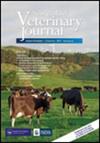Narrative medicine in veterinary practice
IF 1.1
4区 农林科学
Q3 VETERINARY SCIENCES
引用次数: 0
Abstract
With the rise of medical humanities, narrative medicine is becoming established in the human medical field, but there has been scant literature on narrative veterinary medicine. In this book, Karen Fine, a holistic, integrative practitioner, argues that narrative veterinary medicine will not only improve communication with clients, but also the care of veterinary patients and the wellbeing of veterinary team members. The first section provides an overview of narrative medicine, drawing primarily on medical literature to explain the emergence and conceptual basis of this field. In short, in veterinary practice, the client presents a patient or patients, and brings to the consultation a particular narrative. The client narrative yields insights into the client’s world view, which impacts the nature of the human-animal relationship, the decisions made on behalf of that animal, who they trust with the animal’s care, their expectations and “problems in parantheses” (deeper concerns that clients may struggle to articulate). With the veterinary team, a new narrative (including a plan) is co-created with the client. Fine explains how the stories we tell ourselves can impact our own perceptions and approaches to clients, and even our wellbeing. I was reminded of the work of Alf Wight, better known by his pen-name James Herriot. According to the biography written by his son Jim, Wight struggled with mental illness and often worked in difficult circumstances. Were Herriot’s stories an attempt to reframe his work and professional identity? The second section is structured around the veterinary consultation, including narratives of veterinary team members, obtaining a history, making a plan and recording the narrative. To paraphrase Rachel Naomi Remen, veterinarians cure with their expertise but heal with their experience and attention. The third section highlights issues Fine identifies as “unique” to the veterinary profession, including euthanasia, while the fourth focuses on the stories of veterinary team members. It introduces tools for reflective practice, including parallel charts (the story of the patient that isn’t included in medical records, but enables the clinician to develop their own narrative), and personal loss timelines (documentation of our own losses, and how these may inform our interaction with clients and patients). It incorporates narrative case studies throughout. Fine claims that burnout can be decreased by emphasising the unique stories of patients and clients rather than just focusing on diagnosis and treatment, while compassion fatigue can be reduced through reflective practice, and narrative boundary-setting. Whether and how this is the case remains to be seen, as there is a dearth of research in this field. It may be that narrative veterinary medicine reduces burnout and compassion fatigue by increasing engagement and interest. Given concerns about the wellbeing of veterinary team members, it is important that such questions are explored through well-designed studies. Clinicians used to reading veterinary textbooks may find the relative lack of evidence a “hard sell”. Fine’s work is certainly based on key published texts in veterinary narrative medicine, and points to additional sources including narrative medicine journals. It provides a highly accessible, enjoyable introduction to a field which will no doubt grow. The book can be read from cover to cover in a few sittings, or dipped into. My copy is dog-eared and tagged in sections I want to revisit and explore in more depth. The book will appeal most to those already comfortable with the concept of reflective practice, and those willing to make time to listen to and engage with client narratives. Those who aren’t may still find some of the tools described useful to refine their consultations. It demands that we consider the way we construct stories about our work and our patients, the way we respond to stories from clients, and how those stories influence our reasoning, interaction with patients and clients, professional identities and even clinical outcomes. As someone who does not identify as an integrative practitioner, but is a fan of reflective practice, I found this book fascinating. It will be of interest to veterinarians, nurses, technicians, students, educators (particulary those teaching clinical communication) and social workers.兽医实践中的叙事医学
随着医学人文学科的兴起,叙事医学逐渐在人类医学领域站稳脚跟,但关于叙事兽医学的文献却很少。在这本书中,整体、综合的从业者Karen Fine认为,叙事兽医不仅会改善与客户的沟通,还会改善兽医患者的护理和兽医团队成员的福祉。第一节概述了叙事医学,主要利用医学文献来解释该领域的出现和概念基础。简言之,在兽医实践中,客户介绍一名或多名患者,并为咨询带来特定的叙述。客户的叙述可以深入了解客户的世界观,这会影响人与动物关系的性质、代表动物做出的决定、他们信任谁来照顾动物、他们的期望和“妄想症问题”(客户可能难以表达的更深层次的担忧)。与兽医团队一起,与客户共同创建一个新的叙述(包括计划)。Fine解释了我们告诉自己的故事如何影响我们自己对客户的看法和方法,甚至影响我们的幸福感。我想起了阿尔夫·怀特的作品,他的笔名詹姆斯·赫里奥特更为人所知。根据他的儿子吉姆写的传记,怀特与精神疾病作斗争,经常在困难的环境中工作。赫里奥特的故事是否试图重塑他的工作和职业身份?第二部分围绕兽医咨询展开,包括兽医团队成员的叙述、获取历史、制定计划和记录叙述。借用Rachel Naomi Remen的话,兽医用他们的专业知识治愈疾病,但用他们的经验和注意力治愈疾病。第三部分强调了Fine认为兽医行业“独特”的问题,包括安乐死,而第四部分则关注兽医团队成员的故事。它介绍了反思实践的工具,包括平行图表(医疗记录中不包括患者的故事,但使临床医生能够制定自己的叙述)和个人损失时间表(记录我们自己的损失,以及这些如何为我们与客户和患者的互动提供信息)。它包含了贯穿始终的叙述性案例研究。Fine声称,通过强调患者和客户的独特故事,而不仅仅是专注于诊断和治疗,可以减少倦怠感,而通过反思实践和叙事边界设置,可以减少同情心疲劳。这种情况是否存在以及如何存在还有待观察,因为该领域缺乏研究。叙事兽医可能通过增加参与度和兴趣来减少倦怠和同情疲劳。考虑到对兽医团队成员健康状况的担忧,通过精心设计的研究来探索这些问题是很重要的。习惯于阅读兽医教科书的临床医生可能会发现相对缺乏证据是一种“推销”。Fine的工作当然是基于兽医叙事医学的关键出版文本,并指出了其他来源,包括叙事医学期刊。它为一个毫无疑问会发展的领域提供了一个高度可访问、令人愉快的介绍。这本书可以在几次阅读中从头读到尾,也可以翻阅。我的副本是折角的,并在我想重新访问和更深入探索的部分添加了标签。这本书将最吸引那些已经熟悉反思实践概念的人,以及那些愿意抽出时间倾听和参与客户叙述的人。那些没有的人可能仍然会发现所描述的一些工具对完善他们的咨询很有用。它要求我们考虑构建关于我们的工作和患者的故事的方式,我们对客户故事的回应方式,以及这些故事如何影响我们的推理、与患者和客户的互动、职业身份甚至临床结果。作为一个不认同综合从业者,但喜欢反思实践的人,我觉得这本书很吸引人。这将引起兽医、护士、技术人员、学生、教育工作者(尤其是教授临床沟通的人)和社会工作者的兴趣。
本文章由计算机程序翻译,如有差异,请以英文原文为准。
求助全文
约1分钟内获得全文
求助全文
来源期刊

New Zealand veterinary journal
农林科学-兽医学
CiteScore
3.00
自引率
0.00%
发文量
37
审稿时长
12-24 weeks
期刊介绍:
The New Zealand Veterinary Journal (NZVJ) is an international journal publishing high quality peer-reviewed articles covering all aspects of veterinary science, including clinical practice, animal welfare and animal health.
The NZVJ publishes original research findings, clinical communications (including novel case reports and case series), rapid communications, correspondence and review articles, originating from New Zealand and internationally.
Topics should be relevant to, but not limited to, New Zealand veterinary and animal science communities, and include the disciplines of infectious disease, medicine, surgery and the health, management and welfare of production and companion animals, horses and New Zealand wildlife.
All submissions are expected to meet the highest ethical and welfare standards, as detailed in the Journal’s instructions for authors.
 求助内容:
求助内容: 应助结果提醒方式:
应助结果提醒方式:


